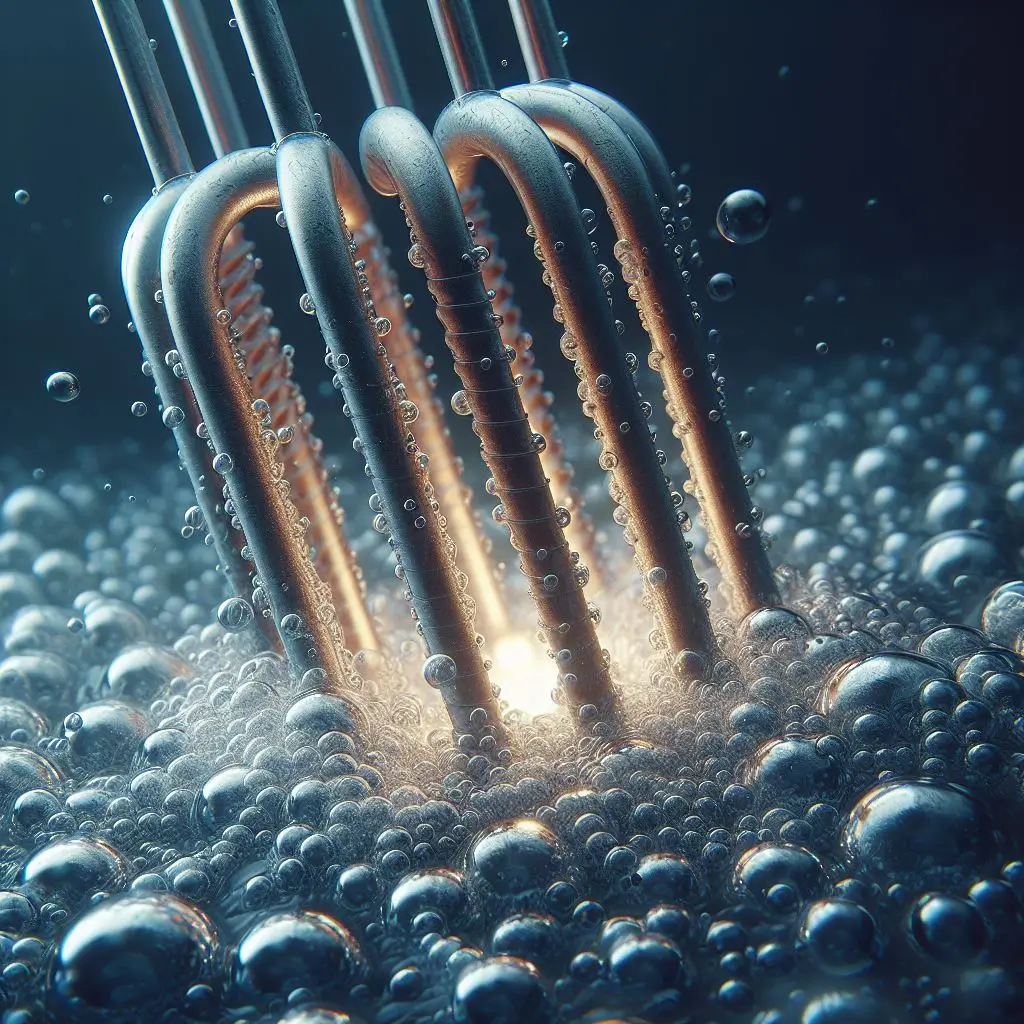Immersion heaters are electrical heating devices used to heat liquids, such as water or oil. They consist of a heating element, typically made of metal, that is immersed directly into the liquid, hence the name “immersion heater.” When electric current flows through the heating element, it gives off heat, which is transferred to the surrounding liquid, raising its temperature for use as a boiler system for either central heating or for hot water (or other industrial uses).
Here are some key features and applications of immersion heaters:
- Construction: Immersion heaters are typically cylindrical in shape, with a heating element encased in a protective sheath made of materials like copper, brass, stainless steel, or titanium. The sheath helps to protect the heating element and ensures it is in direct contact with the liquid.
- Heating Element: The heating element is usually made of a resistance wire or metal loop, such as nichrome, which has high electrical resistance and can generate heat when electricity passes through it. The length and wattage of the heating element determine the power output and heating capacity of the electric immersion heater for a hot water supply. Often installed in oil or hot water cylinders and can be more efficient than central heating boilers.
- Installation: Immersion heaters are designed to be inserted into a container or tank through a mounting flange or a threaded connection. They are commonly used in water heaters, boilers, storage tanks, and industrial equipment that require heated liquids.
- Temperature Control: Some immersion water heaters come with built-in thermostatic control or temperature sensors to regulate the liquid temperature to a high degree of accuracy. These controls help maintain a desired temperature range and prevent overheating, as well as manage the hot water tank or oil use in an energy efficient manner, often automated to switch off at a certain temperature or using an immersion heater timer.
- Types: There are two main types of immersion heater: submersible and flange heaters. Submersible heaters are fully immersed in the liquid, while flanged immersion heaters are mounted on the side of a tank or container and have the heating element exposed to the liquid to generate a hot water source or heat oil.
- Applications: Immersion heaters are widely used in various industries and settings. They are commonly employed in residential water heaters, industrial processes, oil refineries, chemical plants, food processing, and laboratory equipment.
It’s important to note that immersion heater elements should be used with caution to prevent overheating, electrical hazards, or damage to the heating element. Following the manufacturer’s instructions and considering safety guidelines is essential when installing and operating immersion heaters.


